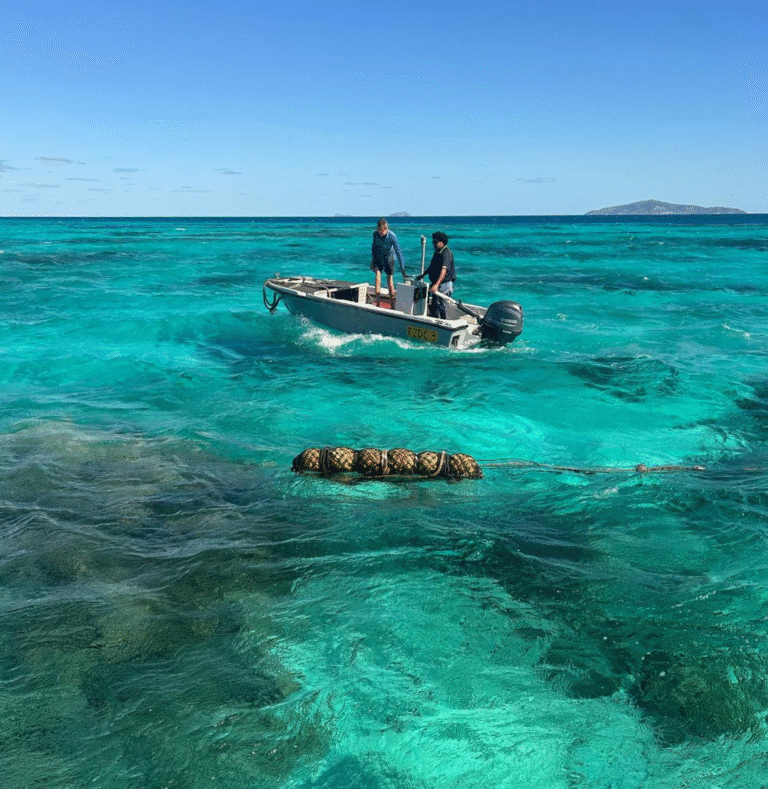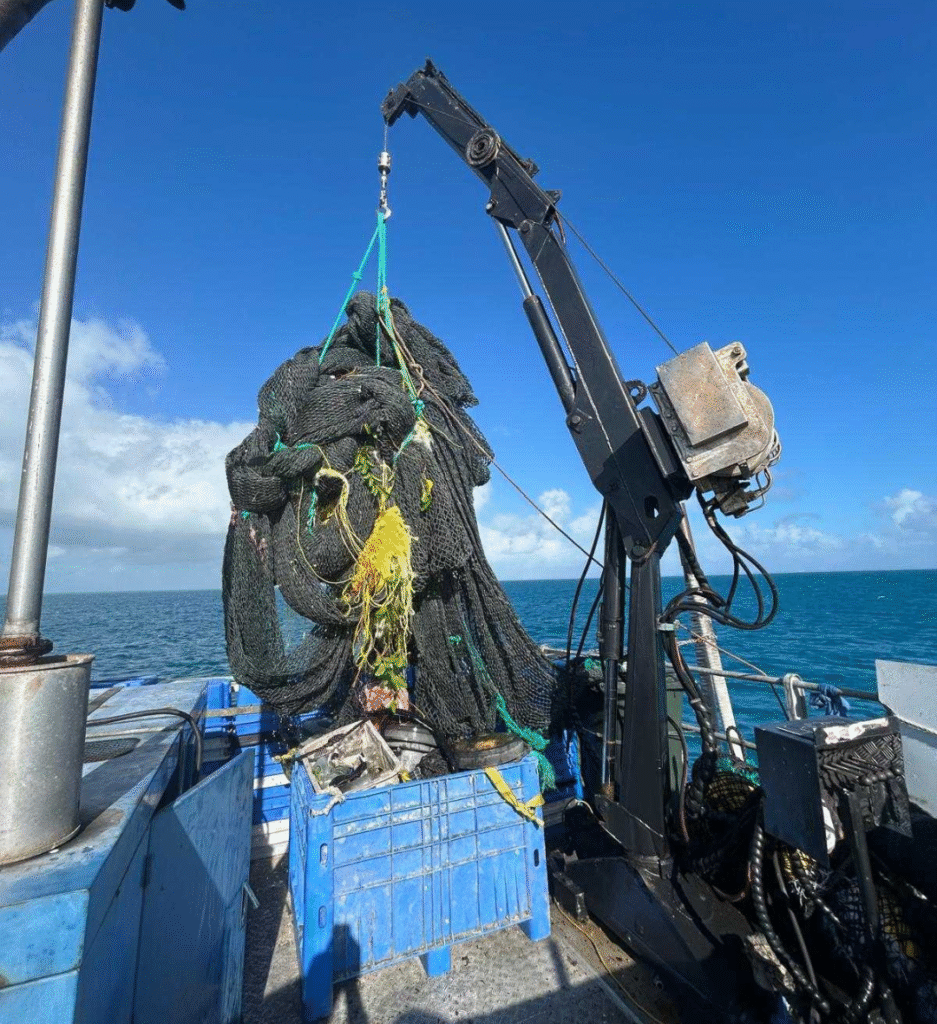Chasing Down Ghost Gear Before it Hits the Reef
Pictured above: A huge ghost net recovered through Project ReCon, which reuses lost GPS buoys to track ghost gear.
Tangaroa Blue Foundation and the Pacific Community (SPC) have entered into a new collaboration through a pilot project to recover dFADs that have been lost from the international purse seine fishing grounds and drifted into the Australian Exclusive Economic Zone (EEZ).
SPC, in collaboration with Satlink and partner fishing companies (the American Tuna Boat Association, Trimarine, Bolton Seafood, and Caroline Fishing Corporation), is monitoring buoys outside the tropical fishing grounds, providing crucial information to increase our knowledge of dFAD fates throughout their entire lifetime.
Through this collaboration, SPC, Tangaroa Blue and Satlink are exploring a dFAD recovery pilot project in Australian waters. The first dFAD satellite buoy was retrieved in early August, north east of Lizard Island in the Great Barrier Reef Region, by one of Tangaroa Blue’s regional partners, the Cossack Pearl.
Understanding more about stranding events of this type of Abandoned, Lost, or Discarded Fishing Gear, as well as the impacts and feasibility for recovery, will help to improve the management of dFADs and environmental risks in the Pacific Ocean, as well as help to allocate funding and resources for ghost gear recovery.
Pictured: The Cossack Pearl recovering a dFAD near Lizard Island (Great Barrier Reef).

What are FADs?
Fish Aggregating Devices (FADs) are anchored or drifting structures deployed to aggregate pelagic fish such as tuna, that can then be captured using purse seine nets by industrial vessels or hook and line by artisanal fishers.
Anchored FADs (aFADs) are used by artisanal and industrial fishers throughout the Pacific and have benefits in terms of livelihoods, food security, and the displacement of fishing efforts from lagoons to oceanic areas.
Drifting FADs (dFADs) are used by industrial purse seine fishers and are typically constructed from a bamboo raft with plastic corks, often accompanied by a satellite echosounder buoy to provide real-time information on location and tuna biomass. The use of dFADs by purse seine fisheries helps stabilise catch rates and provides fishing licence revenues to small island developing states.
Sharing Data, Gaining Understanding
Since 2022, the Tangaroa Blue Foundation has shared data collected from GPS buoys and FADs in Australia with SPC. This data has been recorded in detail through the Australian Marine Debris Initiative (AMDI) Database, with the majority found along the coast of Queensland. So far, 393 data points have been shared with SPC for their FAD database.
Want to know more about Tangaroa Blue Foundation’s work to recover ghost gear? Check out Project ReCon.
Pictured: GPS tracker attached to the dFAD recovered with the help of the Cossack Pearl crew.

